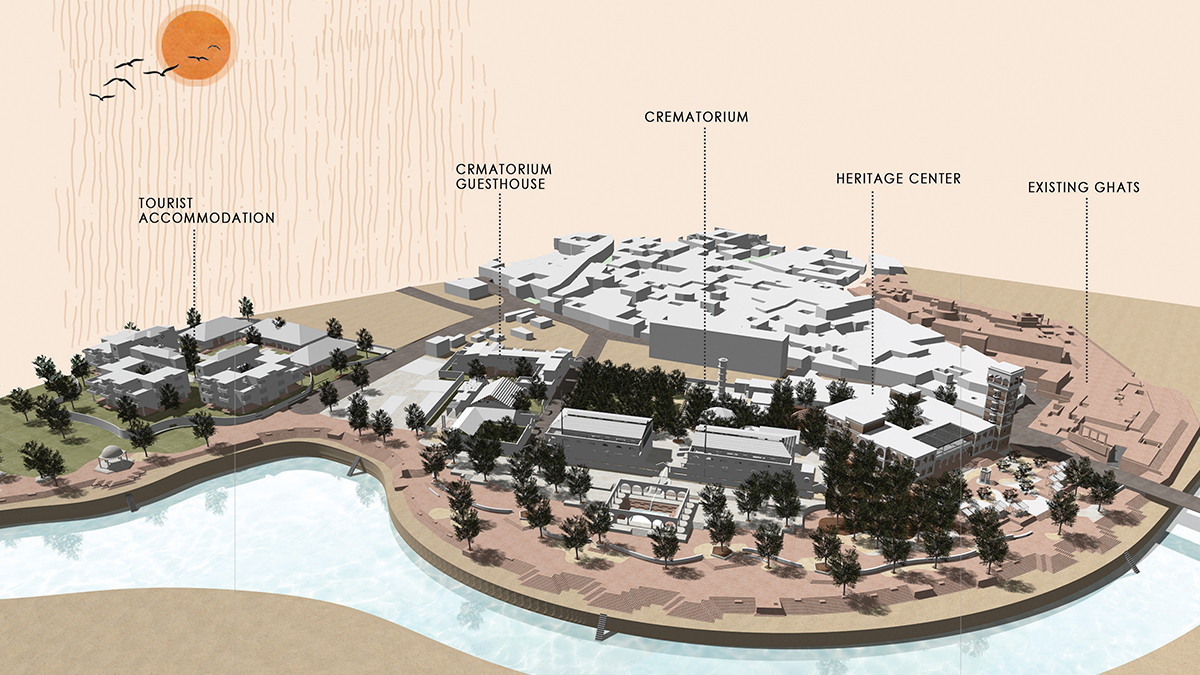Design Dissertation: Sanika Divekar
Guide: Suneeta Samant
Culture is nothing but the way of living and beliefs of people passed down from one generation to another. Culture of any community is responsible for the ways spaces are shaped and thus leading to architectural developments. In the era of globalisation and urbanization, the concept of identity of a place and cultural rootedness is fading away. But what is really the origin of this culture? Rivers act as a cultural construct. They are the arteries of any civilization. India is known as the land of rivers and hence rivers hold a very important place, are worshipped and considered holy. However, in the current age man is slowly going away from the river and has lost the spiritual connection with it. Neglecting, losing rivers is already a major conflict world-wide. They form an important part of cultural heritage of any place.
Siddhpur is a prehistoric town which developed on the banks of river Saraswati. Being the major source of culture, the whole riverbed is dried up. Currently there is no physical presence of the river and it fills partially during monsoons. Saraswati is considered holy even in the absence of water but yet the dried riverbed has been neglected and is slowly getting converted into a dump yard.
Siddhpur is famous majorly for its architecturally astounding Bohra Houses, Bindu Sarovar lake, rituals performed during cremation and festivals. All the festivals are associated to the river bed especially the Kartik Purnima festival that is celebrated right on the dried riverbed where lakhs of people visit on a yearly basis. Siddhpur even after being such a culturally rich town, is losing its importance. The intent is to tackle the various issues created along the riverfront and create a program that benefits both the locals as well as the tourists. Simultaneously creating interactive spaces and platforms for exchange of culture and traditions. The programme includes a heritage centre followed by conduction of heritage walks, remaking parts of crematorium and providing guest houses for the same and to provide tourist accommodation.
The major challenge was to connect all these programs together and revive the river mentally if not physically in the minds of people reminding them of its importance. The design approach starts with creation of a seasonal water channel and a promenade that acts like a medium that can connect people to its river. The approach also deals with maintaining the original functions and public spaces and connecting it to the new ones. The structures designed are in Rammed earth and CSEB as an example for the locals to use such eco-friendly materials instead of currently used concrete houses. The design inculcates elements derived from the context and integration of courtyards for passive ventilation.
Space has an important role in strengthening cultural exchange, because the expected behaviour patterns within a particular space reflects the specific cultural values. Thus, the aim was creating meaningful architecture which tells a story, explains the lifestyle of the people and thus celebrates the town and its rich culture.






